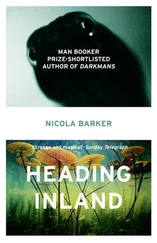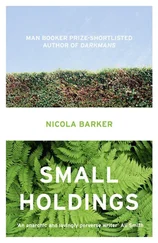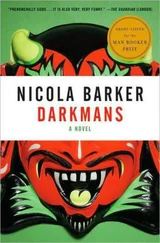Hmmm. Interesting … [plucks at chin, thoughtfully]
Sri Ramakrishna—
Why did you choose to marry
Then live as a monk?
If you are a god
So your wife — by extension—
Must be a goddess …
Mustn’t she?
?
Okay, so we’re still coming to terms with the sudden shock of the Rani’s passing (although she will doubtless pass again — and again, and again — in a variety of media), and we’ve also painstakingly created a little elbow room for the elusive Brahmini (seamlessly! quite seamlessly!), and before too long, we’ll probably need to engage with the self-effacing conundrum that is Sri Ramakrishna’s wife, Sarada Devi, aka the Holy Mother — but before we do that:
Some minor wrangles — or, well, perhaps just the one :
Remember lobon ?
Salt?
Bangladeshi for “nun”?
And remember Hridayram? Or Hriday? Who serves his great master so dutifully (and through this service, the saint claims, will find God)? Well, the English translation of his name, Hriday, actually means “pure heart.” And sixty-two years after the death of the great Bengali saint Sri Ramakrishna — a prophet without a prophecy, a guru without a system, a bizarrely exclusivist egalitarian — will come another saint ( gasp! ), hot on his heels, to this lost and chaotic and sprawling metropolis, who will breathe sharply down his neck (Ramakrishna wears his unpretentious white dhoti with its bright red trim; this other “impostor” saint wears an unpretentious white sari , fringed in blue) and even (dare we say it?) threaten to partially overshadow his startling Calcuttan legacy.
She will be unconventional, too. She will sidestep all traditional formalities. She will refuse to accept government funding for her charitable endeavors because she will not waste so much as a precious second on (argh — yawn — eye roll) pen -pushing. She will not embrace modernity, per se , only the dignity of work, of rolling up one’s sleeves and mucking in, of good, honest sweat and heartfelt sacrifice.
Like Sri Ramakrishna, she will eschew aversion. She will actively embrace filth. Which is fortunate. Because she is here, right here, in the heart of the slums of this belching, rotting, teeming city. She will love the unloved, the unlovable. This is her mantra . And there will be no official record of her work . Neither saint will leave a private paper trail. To them, books, articles, lectures are all silly and worldly and stupidly vainglorious.
Ah. They are close, so close, these two.
In 1952, this other saint — this new (let’s just come out and say it) foreign saint — will establish her Home for the Dying a stone’s throw from Kalighat, the most famous and ancient of all the Kali temples, and it will be a place of selfless service called Nirmal Hriday (Home of the Pure Heart). But here their parallel journeys take somewhat different routes. Mother Teresa (for it is she — who else?) will dedicate her life to an entirely practical kind of service. She will pitch in and get her sari filthy. Then she will trudge to her un-air-conditioned cell, utterly exhausted, and wash it, herself, in a bucketful of cold water. Sri Ramakrisha? Although his legacy — in the hands of Swami Vivekananda (his beloved Naren) — will be improving and altruistic, the saint himself (the source of this great movement which will inspire the likes of Mahatma Gandhi) will be surprisingly indifferent to human suffering. He will not focus on anything— anything —barring the pursuit of God. He is not remotely political. He is not remotely social. He is not remotely incensed or incendiary or indignant.
Sri Ramakrishna is constantly united with God through ecstasy. But the Devi — the Goddess — has told him (many times, in many visions) that he must remain in a state called bhava samadhi . The Hindu scriptures teach us that once God has been fully realized the human body will naturally just shrivel away. But Sri Ramakrishna has been given a mission to serve humanity by teaching us to see God. And to do this (on a practical level) he develops various techniques to try and keep the waves of ecstasy that naturally infiltrate his body and his consciousness — hour by hour, minute by minute, second by second — at bay. He smokes, he chews betel, he drinks iced water. He tries to maintain a few tiny vices. It’s as if he is a hot air balloon, floating, inexorably, up and up to heaven, but every so often he turns down the heady stream of helium, just to lose a bit of height. And this is where we meet up with him — as he draws a quick breath before taking off again — on this strange planet we call earth.
And Mother Teresa’s story? It couldn’t be more different. But it is still curiously intertwined. Because she is here — is she not? — at Kalighat (a place which Sri Ramakrishna regularly frequented) and she is extremely unwelcome to begin with. The building she takes over to commence saving the dying in was a former Kali temple, but by 1952 it has been abandoned, has fallen into a state of chronic disrepair, and is inhabited by a group of local thieves and pickpockets who make a living out of preying on visiting pilgrims. The local council is persuaded to hand over the building to her. But the local people are not happy. And why would they be? Why should they be? Because what kind of a message does it transmit (uncomfortable? Embarrassing? Colonial?) that a tiny woman — a Catholic, more to the point — should’ve come to this sacred Hindu spot to perform her do-gooding services here?
The nuns are regularly menaced and threatened. But they refuse to be intimidated. On one occasion the chief of police is called to try and calm down an angry mob which is marching on the place, intent upon its destruction. He holds back the crowd with an outstretched palm and calmly informs them that he will rip the home down himself, with his own bare hands , if a single man or woman among them is willing to step up and promise to perform the miserable work that the nuns are undertaking. Nobody volunteers. The crowd disperses.
Not long after, one of the priests of the Kalighat Kali Temple collapses in the street, dying of consumption. He is covered in blood and froth. No one will approach him. But the saint, on hearing of his predicament, rushes out and gathers him up in her tiny, powerful arms. And she gives him temporary respite — a wash, a bed, a sip of something, a meal if he can manage it. She offers this poor priest of the Kali Temple a place to die, with dignity. And he gratefully accepts her offer. And all the muttering and the rumbling soon ends, after that.
But before we get too carried away with this … let’s just … let’s just retrace our steps for a moment.…
In the popular mythology of Rani Rashmoni we are regularly informed that she established (way, way earlier than Mother Teresa; in the first half of the nineteenth century) a home for the dying in a place called Nimtala — where a burning ghat was first built in 1828. Did the Rani herself build the ghat ? We know that she built several ghat s (Babu Ghat, and another in Ahiritola). Nimtala Ghat and its cremation ground would later be much frequented by Beat poet Allen Ginsberg and others of his ilk. Whether the Rani funded the ghat itself isn’t made clear. But the home for the dying is a dead cert. Such homes get their first mentions — historically speaking — in association with the early Christian Crusaders. And what is Mother Teresa, if not a Crusader of sorts? Although at the saint’s home in Kalighat, the residents are not preached to. They are not converted. They are offered only basic care, companionship, dignity in death (insofar as that is possible), and perhaps a small mouthful of sacred Ganges water as they draw their last breath.
Читать дальше












